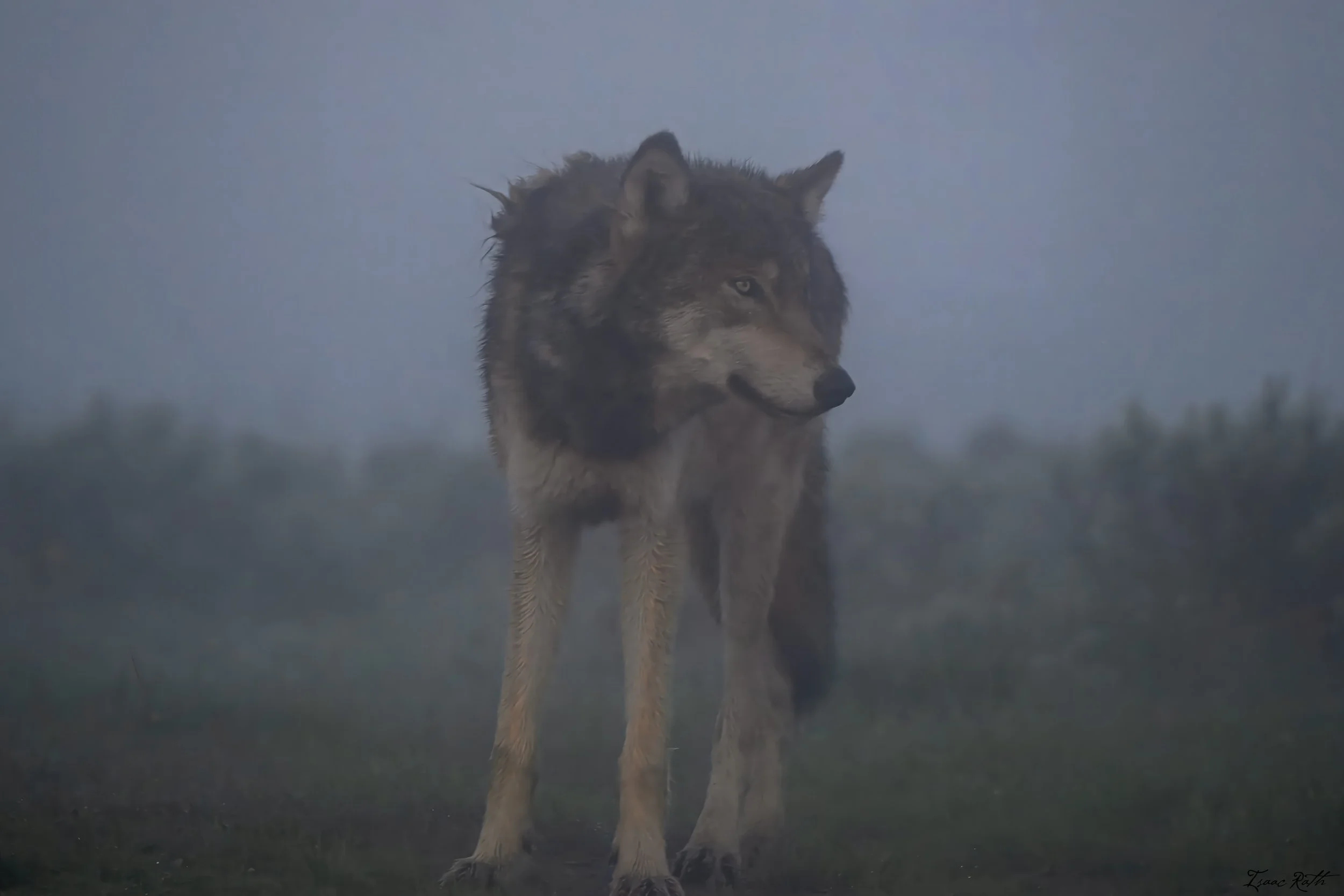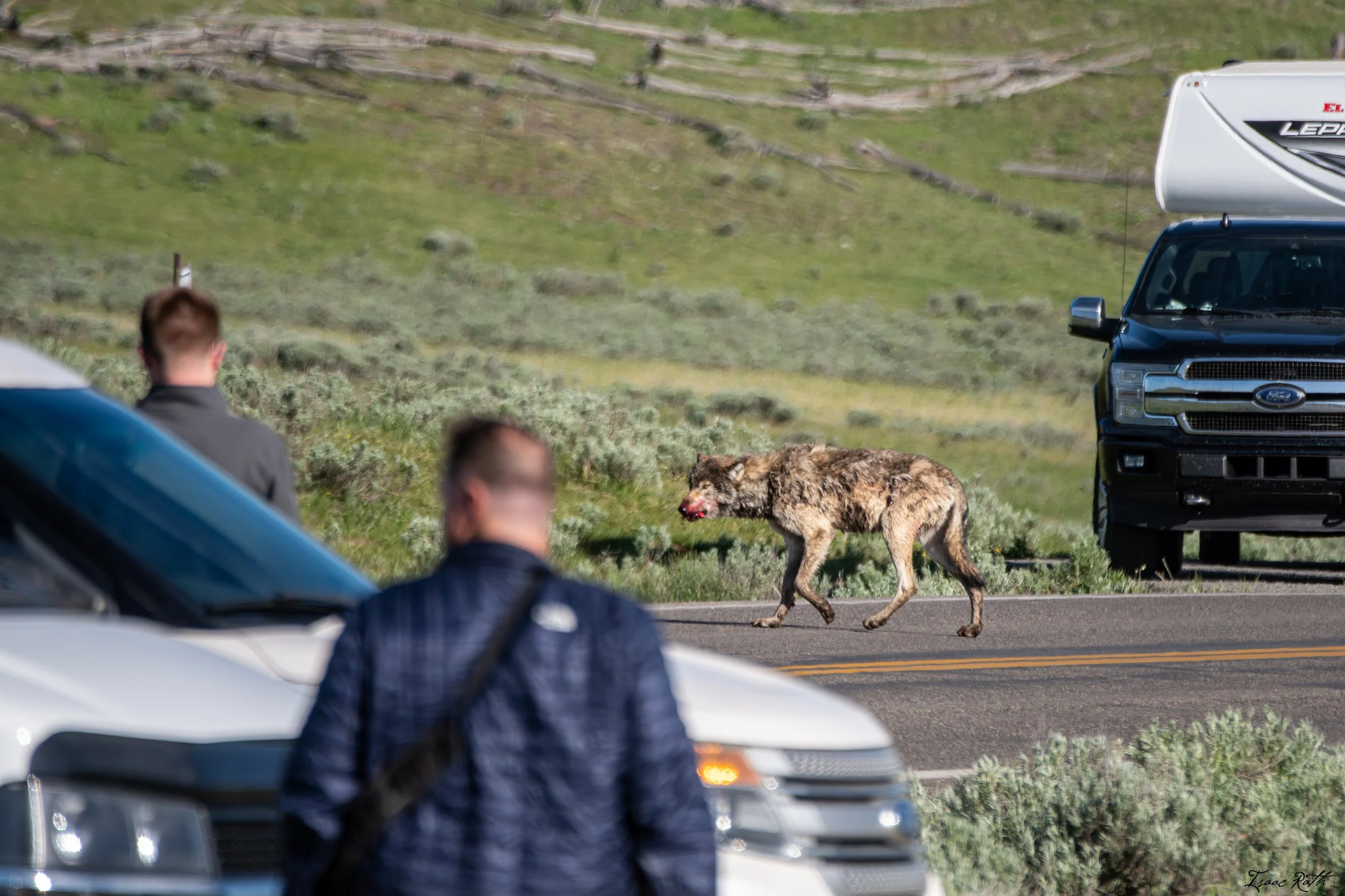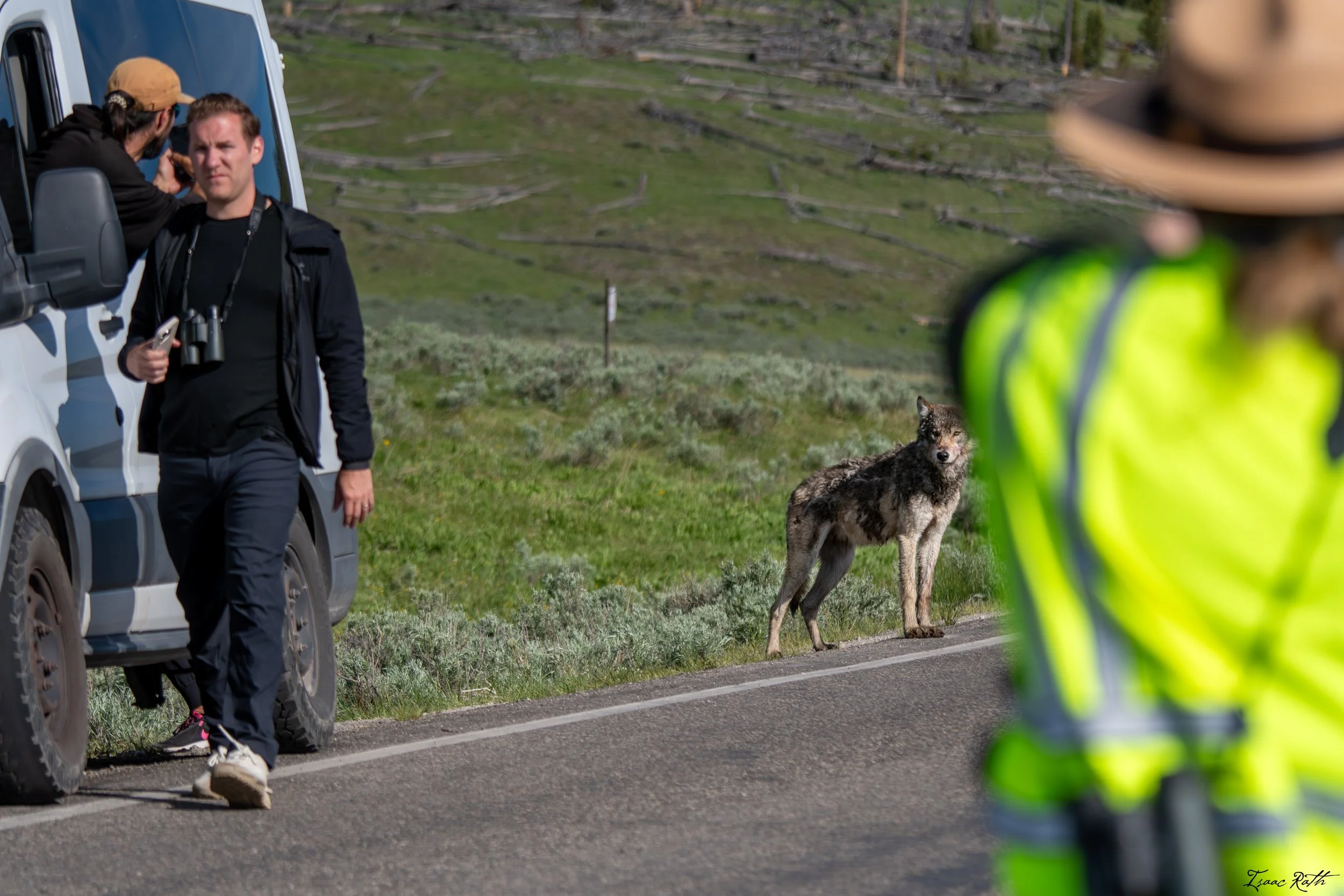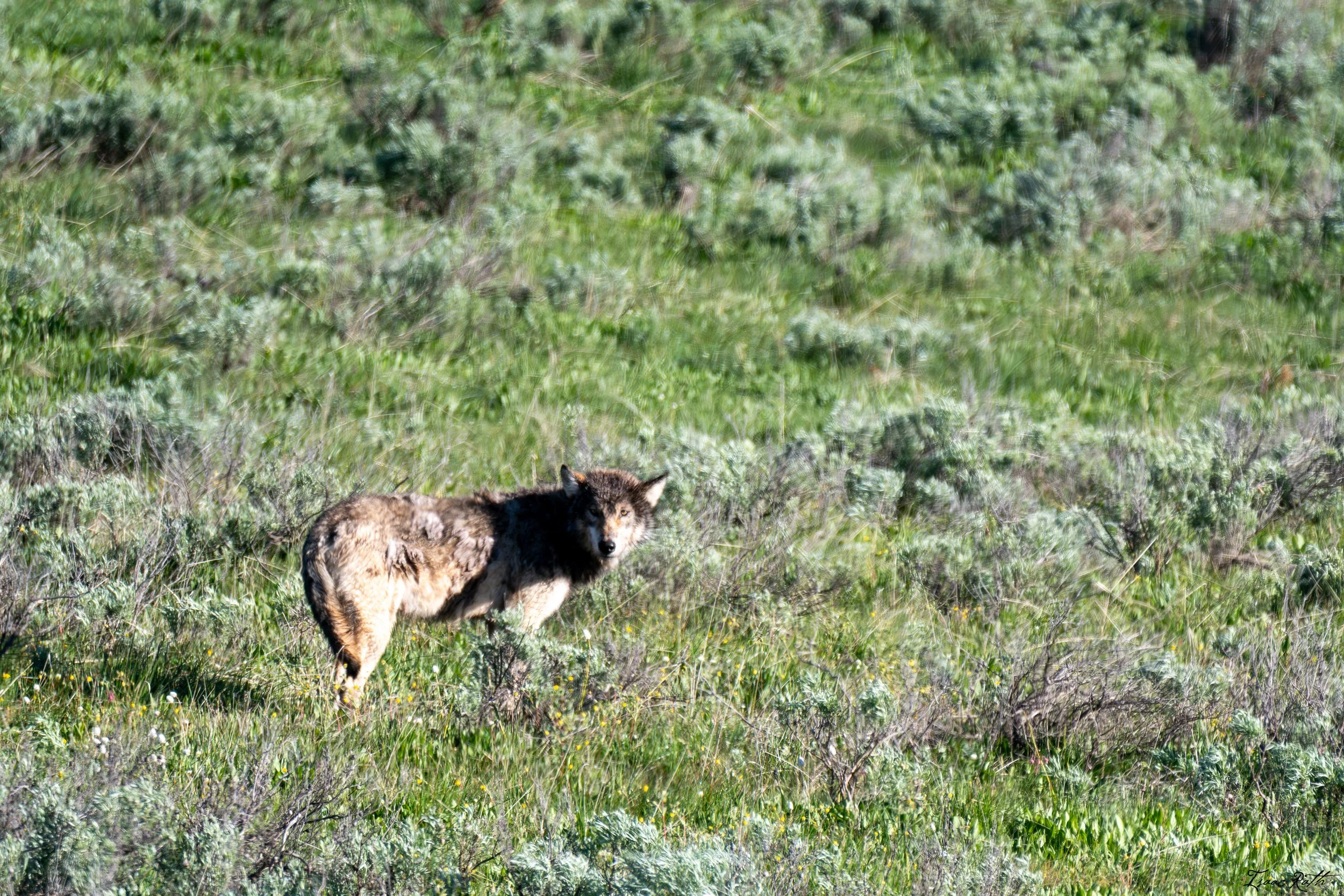Weekend with the Wapitis Part 3 summer 2025
Take note of this wolves distended stomach - they can carry up to 25 pounds of meat back to the den within their stomachs. One there, they will regurgitate the partially digested meat for the puppies to eat.
By Isaac Rath and Katie Milesky
Photos by Isaac Rath and Katie Milesky
Not the clearest photo, but this grey wolf in the fog is the first sight Katie woke up to that morning in Hayden Valley.
On June 14, 2025, we had yet another encounter with the Wapiti Lake wolf pack in Yellowstone National Park. We departed Old Faithful employee village early in the morning so that we could beat the sunrise to Hayden Valley. We had heard from our fellow guides that there was a carcass across the river from the den, and where there’s a carcass, the wolves will go. As we waited for the sun to rise and burn off the thick fog, Katie fell asleep in the car, and I stepped out to talk to a few people nearby. A few minutes passed, and when I turned around to check on Katie, I was stunned to see a gray wolf in the mist, only about 10 meters away from car (and me!). I rushed for my camera and the safety of the car and quickly woke Katie, who had just a moment to process that there was a wolf right outside of our parked car.
As I took photos of the wolf, I noticed another black wolf farther back in the mist, though we weren’t able to get photos of that one. These two wolves were on the west side of both the road and the river, but we knew the elk carcass was on the east side. When the wolves eventually faded back into the mist, we were confident they would cross the road and river to reach the carcass. Where they would do that was anybody’s guess.
About an hour later, once the sun had risen and the fog had cleared, we spotted the wolves on the other side of the river, right where we predicted they would appear. We had been watching them for a while as they disappeared to and from the carcass that was hidden in a small patch of trees. Despite it being a day off work for both of us, we still spent the majority of the time helping others get a safe opportunity to watch wolves in the wild, and because we can’t help ourselves, we educated them about this pack and how important the reintroduction of wolves has been to the ecosystem. A few hours into the morning (around 8:30 am, what we like to call “Normal People Early”), when it was starting to get congested in the area, we noticed some commotion on the opposite side of the road. Katie went to investigate and discovered another gray wolf crossing the road.
She returned upset, as it was painfully obvious to her that the wolf was in distress. The crowds were borderline harassing the wolf, who seemingly wanted to make its way back to the den to feed the pups. There was ONE (young and seemingly inexperienced) park ranger in this whole area to keep people in line, and there were at least 250-300 people there, half of whom were way too close to the wolf. Parents were letting their children run around, scream, and yell, and cars were stopping on the road and blocking it’s path. We did what we could to advocate for the wolf, Katie loudly commenting that “the wolf is very stressed out," and to “give him/her space!” a few times, but unfortunately, most tourists care more about getting a photo or grainy iPhone video to post of Facebook to brag to their friends over the safety and health of the animal.
An ignorant tourist who was within 5 yards of a grey wolf.
When people visit Yellowstone National Park, they often hope to see a variety of animals like black bears, grizzly bears, wolves, bison, moose, and elk. What many don’t realize is that these are wild animals and should never be approached. Visitors are required to stay at least 100 meters away from bears and wolves, and 25 meters from all other wildlife. Furthermore, even if you're 100 meters away, if your presence is changing the animal’s behavior, you should back up or even leave the area. When we decided to start selling our photography, we agreed on one thing - we will never make a dime off of an animal’s distress or discomfort. If we view that the animal is upset or bothered by our presence, we leave if possible, or at the very least, we don’t take the shot, and (such as if we are stuck in a bear jam and can’t leave immediately). These photos are an exception. While these aren’t photos that we intend to sell in any capacity, we did think they were worth taking and worth sharing to advocate for not only the wolves, but all wild animals, especially those in what is supposed to be a protected area.
If wild animals become too comfortable with people getting close, they will lose their natural fear of humans. When this happens, they often begin approaching people, which can lead to dangerous encounters. These animals, once deemed a threat, are often euthanized. It’s often seen with bears, coyotes, and foxes, but the Wapiti Pack in particular has already had to be hazed away from the roads in the recent past. Respecting the rules and keeping your distance helps protect both you and the animals, ensuring these incredible creatures remain wild and safe in their natural home.
If you want to read about some of our other extended observations of the Wapiti Lake wolves, check out “Weekend with the Wapitis” and “Weekend With The Wapitis Summer 2024”. Like we said before, where there’s a carcass, the wolves will come….







